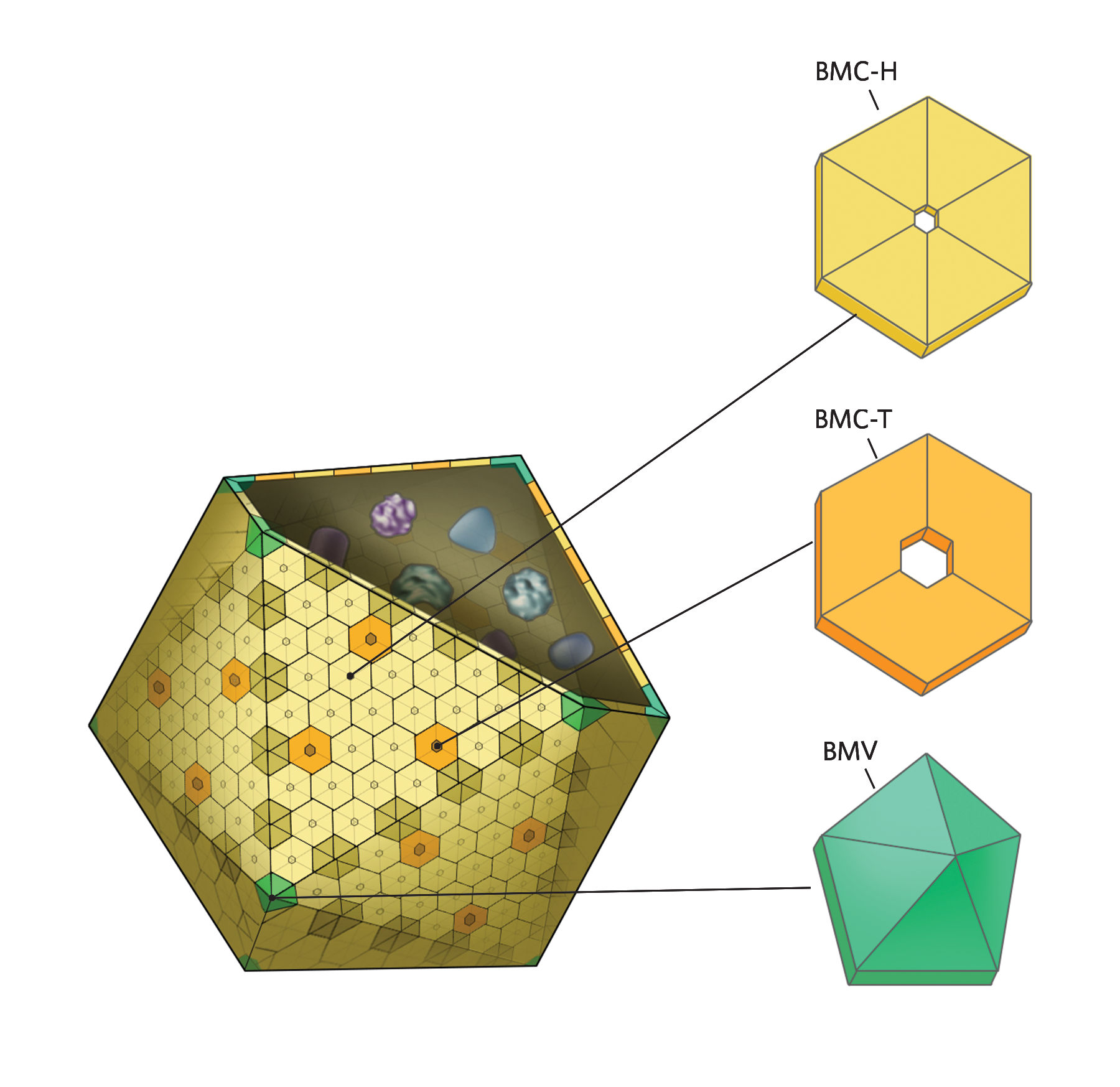ABOVE: © THOM GRAVES
Many different bacterial species contain small, protein-based compartments that expand cells’ metabolic repertoires by sequestering chemical reactions. Depending on their enzyme contents, the compartments can fix carbon, break down molecules for energy, or protect cells from stressful conditions.
Components
Bacterial microcompartment shells are built out of thousands of protein subunits that fall into three basic structural motifs:

BMC: The principal shell protein comes in two main forms, BMC-H, which forms a hexamer, and BMC-T, which forms a trimer. These hexagon-shape components tile together to form the 20 sides of the icosahedron and have a central pore to allow substrates in and products out. The pores in the BMC-H tiles are small, allowingmolecules of just one or a few carbon atoms in and out of the microcompartment. BMC-T pores, on the other hand, are larger, presumably for movement of bigger molecules, and these...
BMV: These pentameric proteins form the vertices of the icosahedron.
Assembly
Some microcompartments form when the inner components aggregate (1) the shell proteins assemble around enzymes and other molecules (2) to generate the completed compartment (3). Other types of microcomparments form when the core proteins and shell come together at the same time (not shown).

Read the full story.
Interested in reading more?







